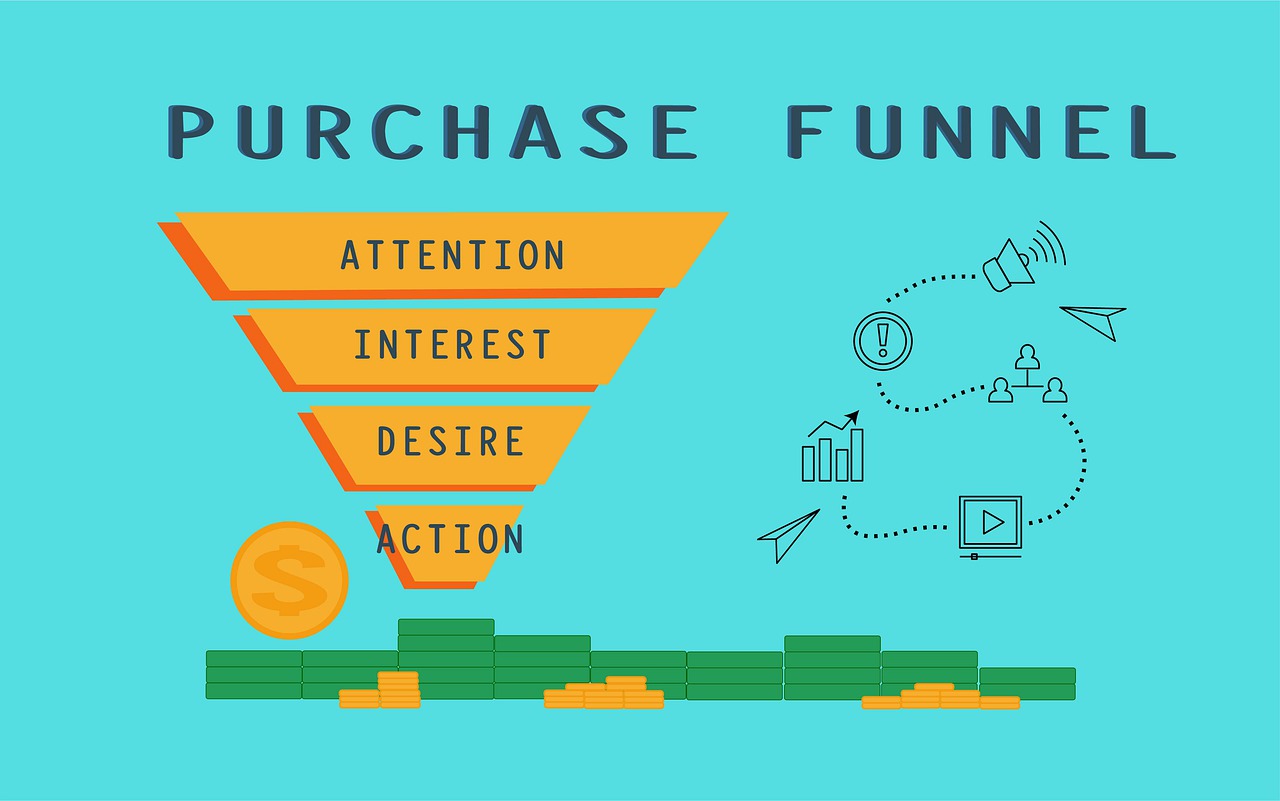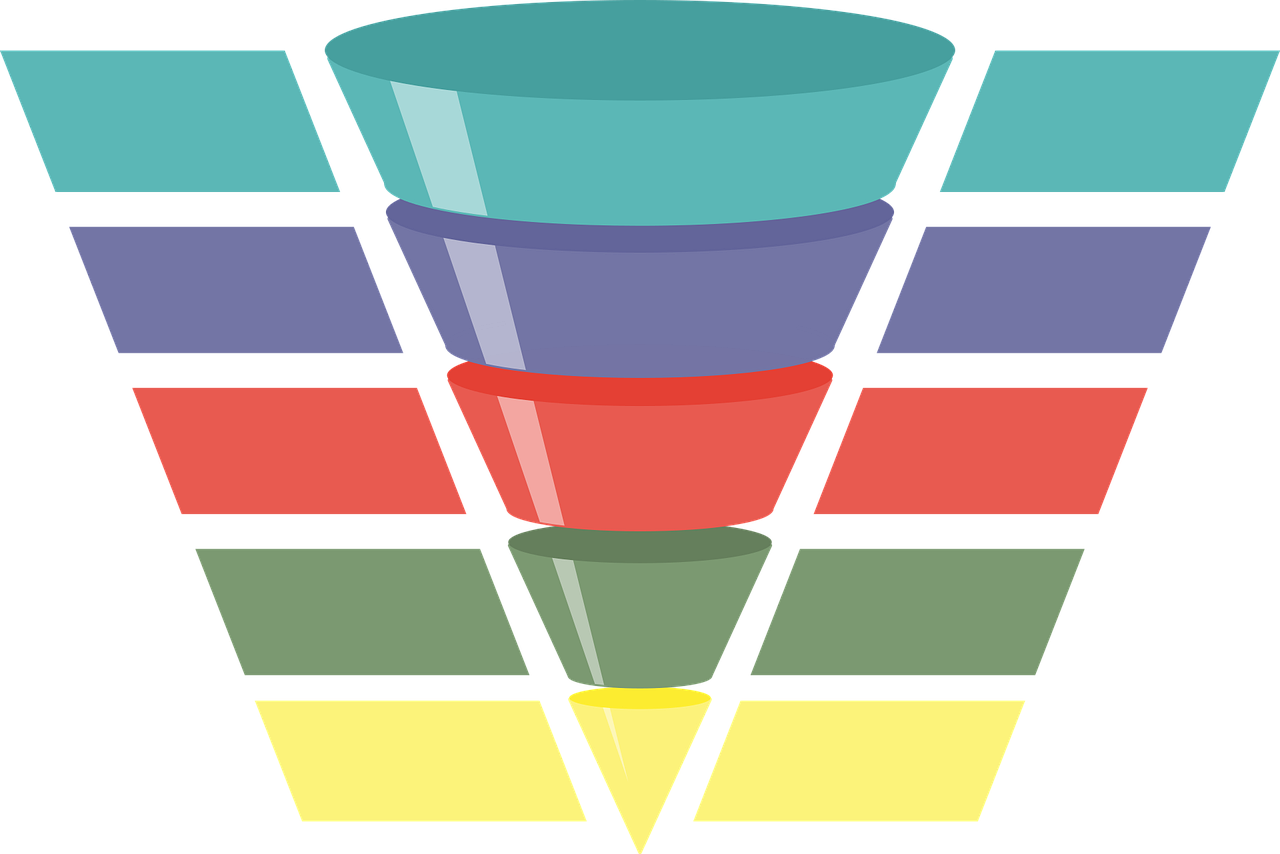Sales Funnel For Coaches: A Guide To Creating An Effective Sales Funnel
If you have a coaching business then you need a seamless sales process. Check out this guide on creating an effective sales funnel for coaches.
Hi Trish Davies here and the focus for today is creating an effective sales funnel for coaches. Sales funnels are essential for any business whether you are a coach or not.
The effectiveness of your sales funnel will have a major impact on the number of customers you receive. Also how much they spend and how long they stay with your company.
This guide will help you start to make sense of it all and explain what sales funnel is and why it’s important. We’ll discuss what success looks like for a sales funnel and what different parts make up the sales funnel.
Finally we’ll take a look at some different models that can be used for your sales funnel such as the ‘sales ladder,’ ‘snowball method,’ and ‘funnelling’.
Sales Funnel For Coaches – What Is A Sales Funnel?

A sales funnel is a process that can be used to convert leads into customers. It starts by attracting potential customers to your business with ads, landing pages, or social media posts.
The next step is getting them interested in your product or service. Once they are interested you want to close the deal so they purchase what you have to offer.
This will require them filling out a lead form, downloading content, subscribing to email lists, attending webinars, and so on.
Why Does Your Sales Funnel Matter?
Your sales funnel will have a major impact on the number of customers you receive, how much they spend and how long they stay with your company.
The more effective your sales funnel is, the more likely it is that you will see a return on investment from the time and money spent to create it.
In order to effectively measure success for your sales funnel, you need to set goals. What you want to achieve as well as target certain metrics that are important for measuring success.
Sales funnels can be broken down into three parts:
- Top of the funnel
- Middle of the funnel
- Bottom of the funnel
The top of the funnel is where visitors come from and this is typically where conversion happens.
The middle of the funnel focuses on retention and making sure those customers who came through your top of the funnel stay with you for a while.
Finally he bottom of this entire process is focused on recurring customers who have been retained from earlier steps in the process.
The goal here is to turn those one-time customers into recurring ones who keep coming back to your business. Also buying more products from you over time.
What Is Success For a Sales Funnel?
The success of your sales funnel will have a major impact on the number of customers you receive, how much they spend and how long they stay with your company.
So what does success look like? It depends on what your goals are for your company. For some people, success might be having 100 new customers this year. For others, it might be making $1 million in revenue this year. If you want to know what is considered successful for a sales funnel, it’s important that you figure this out first before getting started since it will help determine the steps that are needed to achieve that goal.
What Are The Parts Of A Sales Funnel?
A sales funnel is typically broken up into three parts:
– The top of the funnel consists of attracting and persuading potential customers.
– The middle part of the funnel is known as the conversion process, which is where you convert a lead to a customer.
– The bottom section is where you generate repeat business through your customer’s referrals and reviews.
Types Of Sales Funnels

There are many types of sales funnel models. All of them have a common theme in that they all have a funnel shape and they each have different levels to signify the stages in the purchase process.
The two most common types of sales funnels are the direct sales funnel and the conversion sales funnel.
A direct sales funnel has a one-on-one relationship with a customer. Meaning that there is only ever one contact point between your company and a customer. This type of sales funnel is often used in B2C industries such as retail or grocery stores.
The conversion sales funnel has more than one contact point with the customer. This is usually seen in B2B industries such as marketing or financial services.
Whether you’re an entrepreneur, coach, consultant, app developer, etc., you must use a sales funnel. Then you can drive customers into your business and ensure that they convert into paying customers. You do that by using tactics like email marketing or advertising on social media.
Sales Ladder
The sales ladder is a popular way to create a sales funnel. It works well for anyone who wants to take their time and work their way up to making a larger sale.
The first step of the sales ladder would be to create an email list of potential clients who may be interested in what you have to offer. The next step would be to send out emails with offers such as free content or samples of your product.
Every so often, these people will respond and buy something from your company such as a book or workbook. The idea is that they are slowly climbing the ladder, getting closer and closer to buying your most expensive product.
If this model appeals to you, it’s important that you have some urgency built into the process. Then these people don’t get too comfortable with being on the bottom of the ladder for too long. For example, you might send out follow-up emails every few weeks asking them if they’re ready to make a purchase yet.
The sales ladder is great because it lets people go at their own pace which can help increase sales in the long run. However, there are many other models that might work better for you depending on your situation, find one that suits your needs!
Snowball Method
The Snowball Method is a powerful way to get your business up and running. It helps you create a steady flow of customers from the start.
The method begins by targeting a small audience that is interested in what you have to offer. You can target this audience through social media ads, paid search, or even by cold emailing them.
Once you make contact with this small group, you need to give them what they are looking for. Whether it’s access to an email course or specific information within your product line, without asking for anything in return for now.
Once you’ve given them what they want, follow-up with them regularly and ask for something in return. That may be an email address, phone number or completed survey.
This will help you build up your database of contacts that are interested in hearing more about what you have to offer. The more successful the snowball grows, the bigger it becomes until it finally reaches its full size and rolls downhill creating momentum all on its own.
Sales Funnel For Coaches – Funnelling
Funnelling is a model that has been created to help businesses understand the process of moving customers through different stages.
A funnel is shaped like a cone. As people move through it, they become more and more committed to your business. The funnel starts wide at the top and narrows down to one point at the bottom.
These funnels are designed for marketing products and services. They feature three stages
- Awareness
- Consideration
- Conversion
The first stage is awareness which occurs when someone hears about your company or product for the first time.
Next comes consideration where people start looking into your company or product to see if it would benefit them in any way.
Finally there’s conversion where people take the next step by purchasing your product or service
That’s a comprehensive guide on sales funnel for coaches. Which one will you create? If you need more assistance then check out my free 9 step program to creating an online coaching business.
Register now by Clicking Here!
Helping you build your authenticity, authority and audience.
Trish Davies
![]()
Build Your AU


Recent Comments